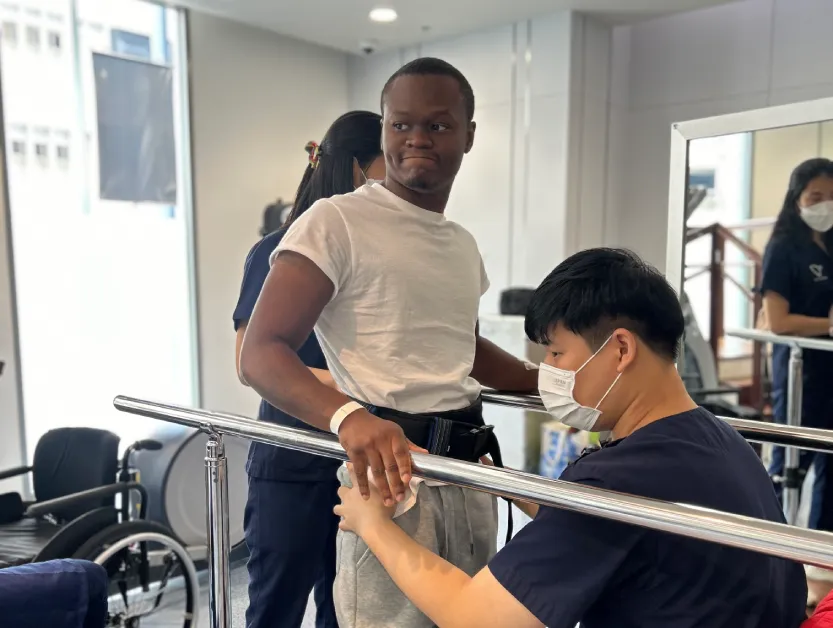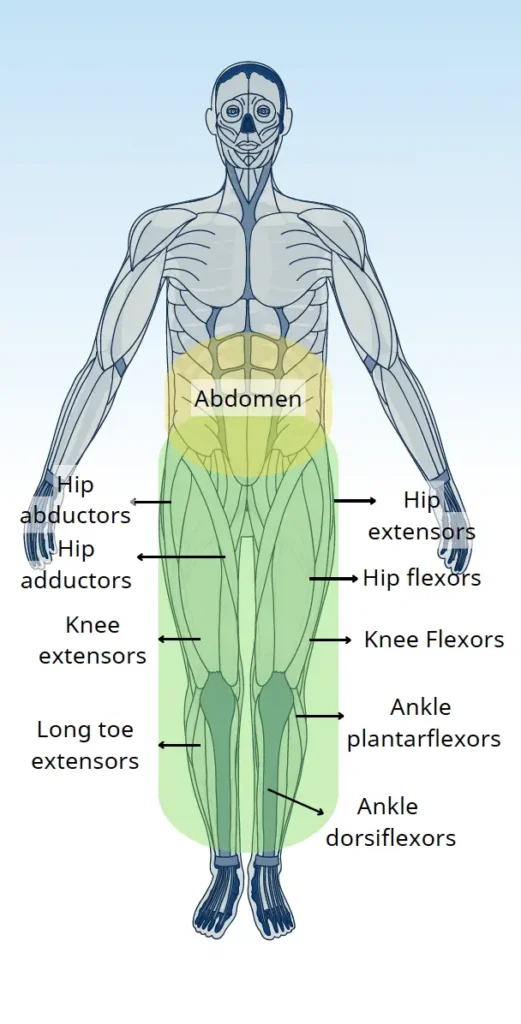Davonta
- Spinal Cord Injury (SCI),
- L1, Complete
Stem Cells, LamiSpine

| LamiSpine/ Stem cells treatment | Number of stem cells | Delivery method |
|---|---|---|
| Amniotic Fluid Stem Cells (AFSC) | 80 million cells | LamiSpine injection |
| Mesenchymal Stem Cells type 2 | 40 million cells | Intravenous injection (IV injection) |
| Amniotic Fluid Stem Cells (AFSC) | 30 million cells | Lumbar Puncture injection (LP injection) |
| Post-surgical care | Total sessions | Sessions per week | Time (Hr.) per session |
|---|---|---|---|
| Physical Therapy | 16 | 5 | 1 |
| ABT - LT (Activity Based Training and Locomotor Training) | 32 | 10 | 1 |
| PAS (Paired Associative Stimulation) | 18 | 5 | 1 |
| Total sessions of rehabilitation | 66 |

| Muscle improvement | Before LS surgery | At discharge |
|---|---|---|
| Hip flexors | 2 | 2+ |
| Hip extensors | 1 | 2 |
| Hip abductors | 1 | 1+ |
| Hip adductors | 1 | 1+ |
| Knee extensors | 1 | 2 |
| Knee flexors | 1 | 2 |
| Ankle dorsiflexors | 1 | 1 |
| Ankle plantarflexors | 1 | 1+ |
| Long toe extensors | 1 | 1 |
| Abilities & Symptoms | Before LS surgery | At discharge |
|---|---|---|
| Standing with support | Dependent (KAFO, minimal assist with hip and knee locking) | Dependent (without KAFO, minimal assist with knee locking) |
| Stepping with support (for more than 100 meters) | Possible (with KAFO and walker) | Independent (with mirror and KAFO) |
| Standing balance | Fair | Good |
| Sitting balance | Good | Normal |
| Motor coordination (while stepping) | Moderate assist | Independent |
| Sit to stand (in a walker) | Minimal assist | Independent |
| Ability to transfer | Independent | Independent |
| Ability to use abdominal muscles during bowel program | Absent | Dependent (with caregiver support) |
| Stamina & Fatigue | Fair (30reps, walk 50 meters) | Good (50 reps, walk 125 meters) |
| Spasticity | Present | No change |
| Abilities & Symptoms | Before LS surgery | At discharge |
|---|---|---|
| Neuropathic pain | Present | Absent |
| Temperature sensations | Absent | No change |
| Proprioception | Absent | No change |
| Bladder sensation | Absent | No change |
| Bowel sensation | Absent | No change |
| Abilities & Symptoms | Before LS surgery | At discharge |
|---|---|---|
| Sweating ability | Blood Pressure Regulation | Present (below level of injury) |
| Temperature regulation | Normal | Normal |
| Blood pressure regulation | Normal | Normal |
Following the Lamispine surgery, Davonta started to experience muscle contractions for the first time since his injury. He started to regain voluntary muscle contractions in his glutes, hip muscles, and quadriceps. His muscle tone, which had been flaccid since the injury, started to recover. He was able to regain partial control over his hip muscles and was able to perform walking using his hip muscles.
Immediately after the injury Davonta started to regain feelings in various parts of his legs. The early feelings came back in the form of tingling sensations and pins and needles indicating a potential future recovery of more pronounced sensory functions. He also reported improvements in his pain score and was able to sleep, for the first time since his injury, without waking up due to excruciating pain.
No changes at the time of discharge
His static sitting balance was already good however his dynamic sitting balance started to improve.
Using a walking frame he was able to stand and remain in standing position for extended periods of time.
Back in 2023, Davonta had suffered a traumatic spinal cord injury around the T11-L1 level. As a result, he can’t feel his legs or feet. When he came to us, he received Verita Neuro’s flagship LamiSpine surgery. This surgery is where purified and cultured populations of amniotic fluid stem cells were carefully transplanted into the injured spinal cord. Additionally, he received one intravenous injection of Mesenchymal Stem Cells type 2 and one lumbar puncture injection of amniotic fluid stem cells.
Overall, Davonta reported improvements in both areas, motor function, and sensory function. He had a flaccid muscle tone with floppy paraplegia after the injury which indicated the major loss of lower motor neuron populations in the lumbar spinal cord. After the treatment he started to regain muscle tone, muscle contractions and voluntary muscle control and for the first time, since his injury, he was able to produce voluntary movements in his lower limbs. He also started to perform standing and walking training and dynamic sitting balance training.
In terms of his sensory function, it started to return in the form of pins and needles and tingling sensations.